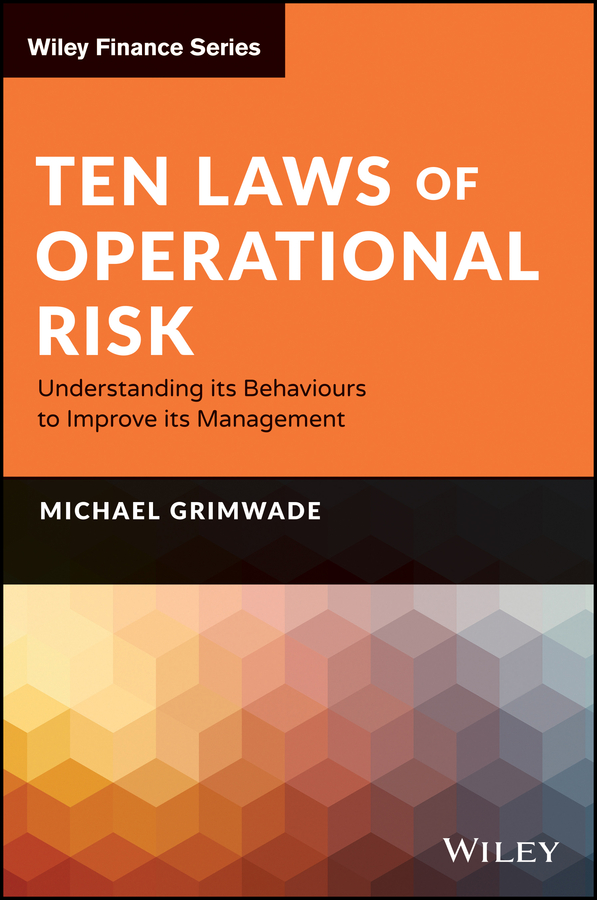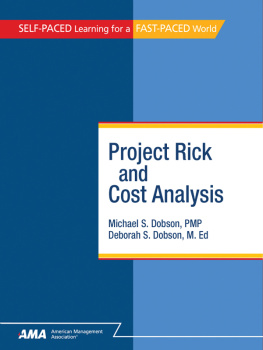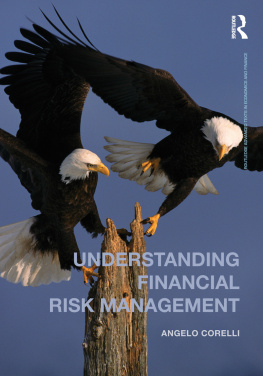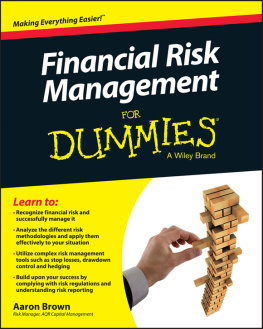
Table of Contents
List of Tables
- Introduction
- Chapter 1
- Chapter 2
- Chapter 3
- Chapter 4
- Chapter 5
- Chapter 6
- Chapter 7
- Chapter 8
- Chapter 9
- Chapter 11
- Chapter 12
- Chapter 13
- Chapter 16
- Chapter 17
List of Illustrations
- Introduction
- Chapter 1
- Chapter 2
- Chapter 3
- Chapter 4
- Chapter 5
- Chapter 6
- Chapter 7
- Chapter 8
- Chapter 9
- Chapter 10
- Chapter 11
- Chapter 12
- Chapter 13
- Chapter 14
- Chapter 15
- Chapter 16
- Chapter 17
- Part 2
Guide
Pages
Founded in 1807, John Wiley & Sons is the oldest independent publishing company in the United States. With offices in North America, Europe, Australia and Asia, Wiley is globally committed to developing and marketing print and electronic products and services for our customers professional and personal knowledge and understanding.
The Wiley Finance series contains books written specifically for finance and investment professionals as well as sophisticated individual investors and their financial advisors. Book topics range from portfolio management to e-commerce, risk management, financial engineering, valuation and financial instrument analysis, as well as much more.
For a list of available titles, visit our Web site at www.WileyFinance.com.
Ten Laws of Operational Risk
Understanding its behaviours to improve its management
MICHAEL GRIMWADE

Copyright 2022 by John Wiley & Sons, Ltd.
Registered office
John Wiley & Sons Ltd, The Atrium, Southern Gate, Chichester, West Sussex, PO19 8SQ, United Kingdom
For details of our global editorial offices, for customer services and for information about how to apply for permission to reuse the copyright material in this book please see our website at www.wiley.com.
All rights reserved. No part of this publication may be reproduced, stored in a retrieval system, or transmitted, in any form or by any means, electronic, mechanical, photocopying, recording or otherwise, except as permitted by the UK Copyright, Designs and Patents Act 1988, without the prior permission of the publisher.
Wiley publishes in a variety of print and electronic formats and by print-on-demand. Some material included with standard print versions of this book may not be included in e-books or in print-on-demand. If this book refers to media such as a CD or DVD that is not included in the version you purchased, you may download this material at http://booksupport.wiley.com. For more information about Wiley products, visit www.wiley.com.
Designations used by companies to distinguish their products are often claimed as trademarks. All brand names and product names used in this book are trade names, service marks, trademarks or registered trademarks of their respective owners. The publisher is not associated with any product or vendor mentioned in this book.
Limit of Liability/Disclaimer of Warranty: While the publisher and author have used their best efforts in preparing this book, they make no representations or warranties with respect to the accuracy or completeness of the contents of this book and specifically disclaim any implied warranties of merchantability or fitness for a particular purpose. It is sold on the understanding that the publisher is not engaged in rendering professional services and neither the publisher nor the author shall be liable for damages arising herefrom. If professional advice or other expert assistance is required, the services of a competent professional should be sought.
Library of Congress Cataloging-in-Publication Data is Available:
ISBN 9781119841357 (Hardback)
ISBN 9781119841364 (ePDF)
ISBN 9781119841371 (ePub)
Cover Design: Wiley
Cover Image: themacx/Getty Images
To Karen, Charlotte and Olivia.
My thanks go to the management of ICBC Standard Bank for their ongoing encouragement and support.
I would also like to thank my friends and colleagues in the world of Operational Risk for helping me by reviewing drafts of this book, in particular Professor Elizabeth Sheedy, Dr Patrick McConnell, Dr Peter Mitic, Dr Ariane Chapelle, Dr Luke Carrivick, Dr Peter McCormack, Siraj Ahmed, Mia Pollock and Wayne McLaughlin.
About the Author
MICHAEL GRIMWADE first worked on Operational Risk management during the early years of the profession in the mid-1990s, a decade before Basel II was finalised. He is Head of Operational Risk for ICBC Standard Bank and has previously held senior Operational Risk management roles at MUFG Securities, RBS and Lloyds TSB. Prior to this Michael was a management consultant with PwC and Deloitte Consulting, and he has also been a Director of the Institute of Operational Risk.
Michael has written a number of articles on the setting of appetite for Operational Risk; scenario analysis techniques; the quantification of emerging risks; how Climate Change may impact Operational Risk; and the modelling of Operational Risk capital. His book Managing Operational Risk: New Insights and Lessons Learnt was published in 2016. Michael received an award in 2014 from the Institute of Operational Risk for his contribution to the profession. He has a degree in Zoology from Oxford University and is a member of the ICAEW.
He lives in West London with his wife Karen and their two daughters, Charlotte and Olivia, and a very curious Bengal cat, called Milo. Any typos in this book are most likely caused by Milo's habit of walking across his keyboard.
The contents of this book are the Author's own views rather than those of ICBC Standard Bank.
Unlike credit and market risk, operational risk is lacking in basic theory as to why, where and when operational risk losses occur.
Dr Patrick McConnell
Operational Risk Executive, Academic and Author
You can know the name of a bird in all of the languages of the world, but when you're finished, you'll know absolutely nothing whatsoever about the bird so let's look at the bird and see what it's doing that's what counts.
Professor Richard P. Feynman
Winner of the Nobel Prize in Physics in 1965
Introduction
Understanding Operational Risk is intuitively fundamental to its effective management. But a review of the profession's literature, regulations and training reveals that whilst there are many thousands of words on the subject of integrated frameworks for managing Operational Risk, specific behaviours and quantification, there is a lack of an overarching theory that might explain and predict its behaviour. This observation was made very clearly in a paper written by Dr Patrick McConnell, which opens with the statement that Unlike credit and market risk, operational risk is lacking in basic theory as to why, where and when operational risk losses occur (McConnell, ).
The challenge is that Market and Credit Risk are respectively defined as risks of losses arising from external events, i.e. the movement of market prices or the failure of a customer/counterparty to meet its obligations, whilst Operational Risk is primarily defined as losses arising from internal causal factors. In his brief paper McConnell proposes that Operational Risk losses arise when formal information channels are corrupted, interrupted or disrupted and that the scale of any losses can be linked to the quantum of data involved. In this book, I adopt a different approach, as I have set out Ten Laws of Operational Risk that describe how inadequacies or failures; business profiles; human and institutional behaviours and biases; and internal and external causes combine to result in events. The nature of the impacts drives both the rapidity and the scale of any resulting losses. Whilst this is different from McConnell's approach, his paper was both my inspiration for this book, and also influenced my ideas.
Next page








